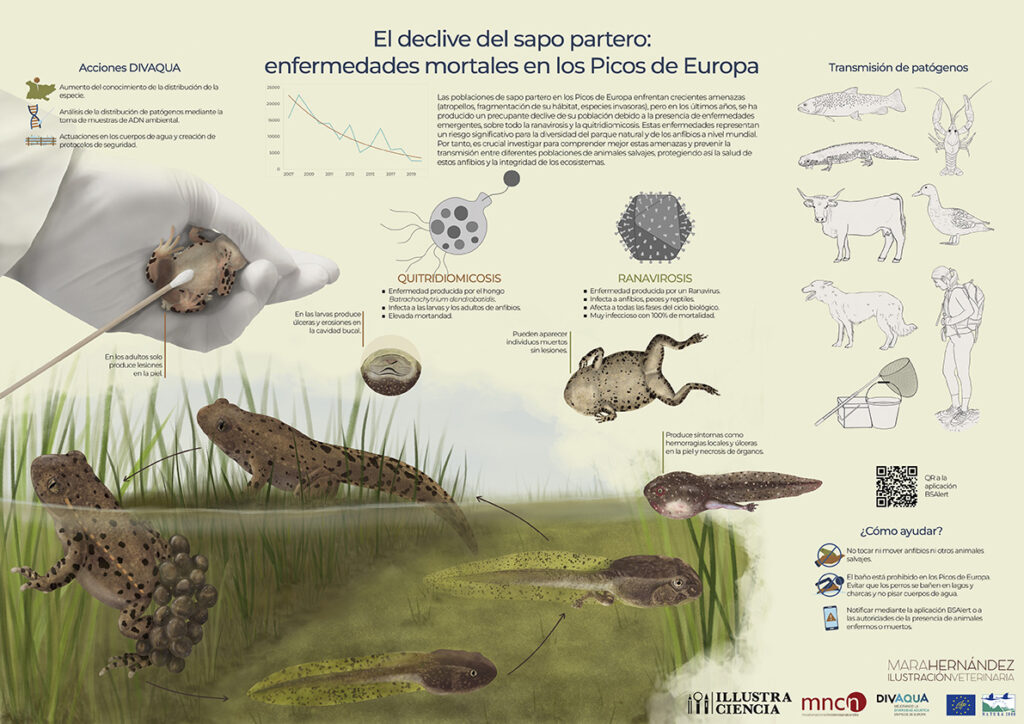Midwife toad populations in the Picos de Europa face an increasing number of threats (being run over by vehicles, habitat fragmentation, invasive species), but in recent years there has been a worrying decline in their population due to the presence of emerging diseases, particularly ranavirus and chytridiomycosis. These diseases pose a significant risk to the diversity of the nature park and amphibians worldwide. Research is therefore essential for a better understanding of these threats and to prevent transmission between different wild animal populations, thus protecting the health of these amphibians and the integrity of ecosystems.
DIVAQUA actions
Increase in knowledge of the species distribution.
Analysis of the distribution of pathogens through the taking of environmental DNA samples.
Actions in bodies of water and creation of safety protocols.
In adults, lesions only occur on the skin.
In larvae, it produced ulcers and erosions in the oral cavity.
Dead individuals may appear without lesions.
It causes symptoms such as local bleeding, ulcers on the skin and organ necrosis.
